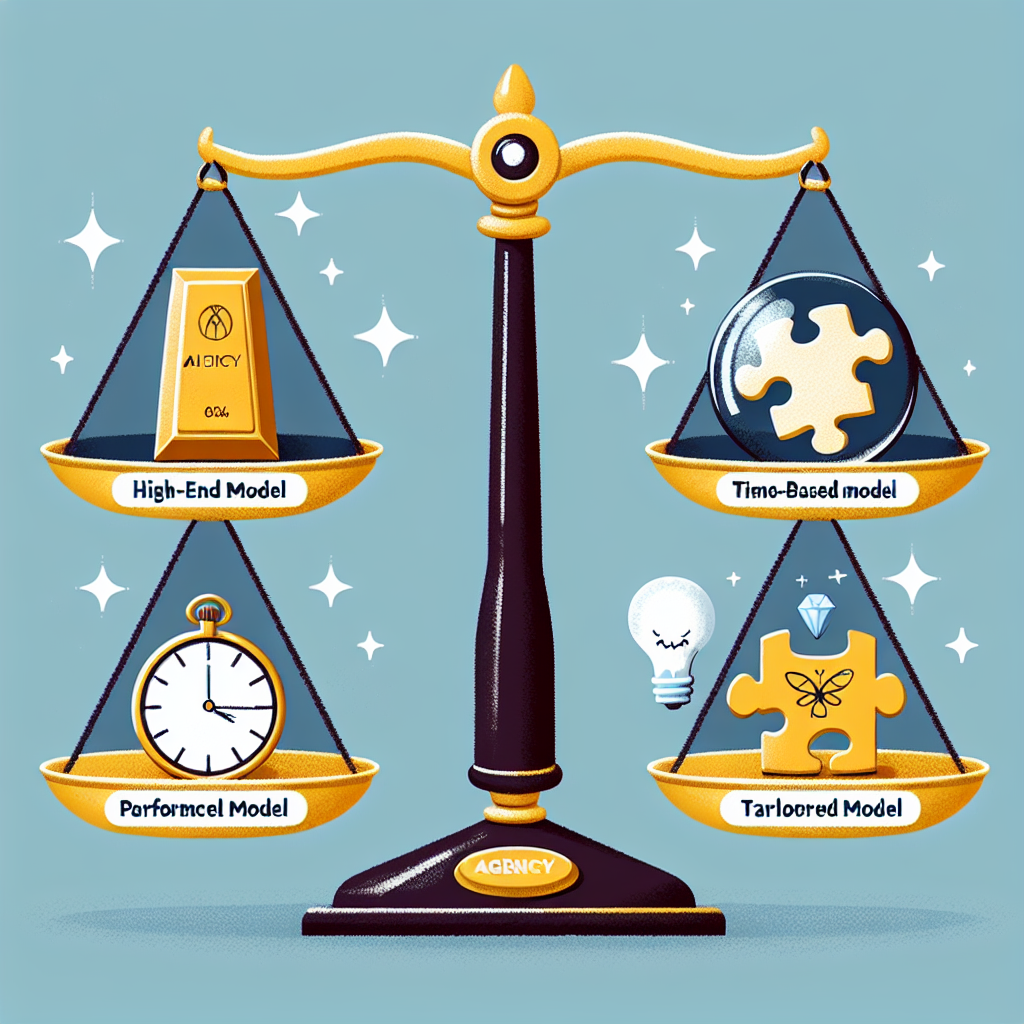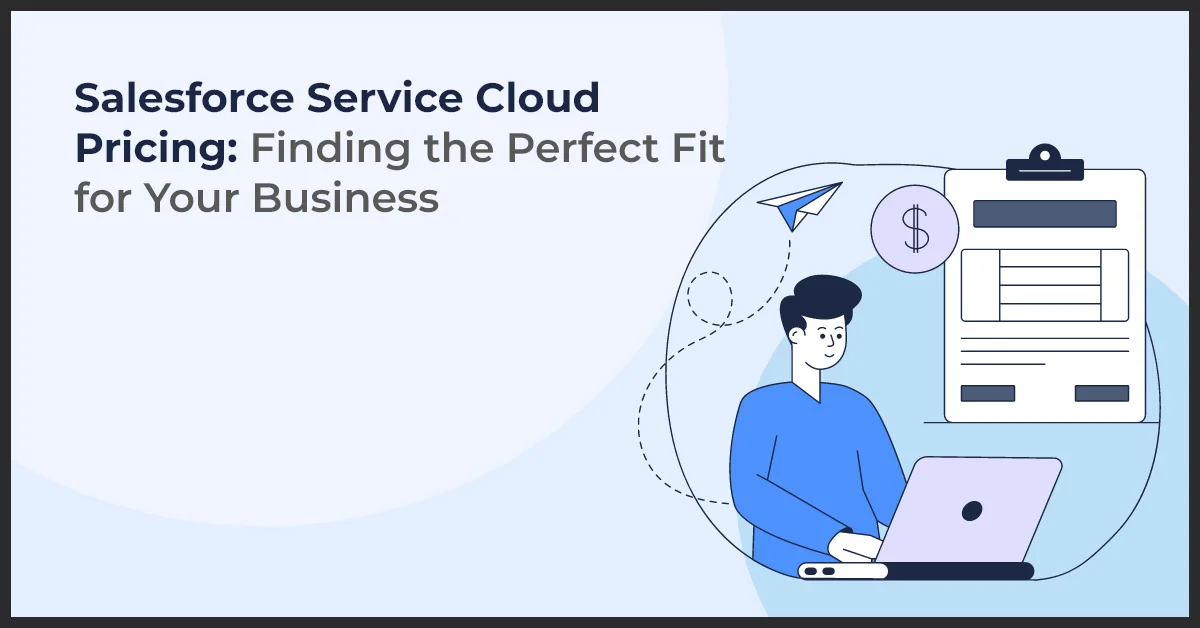Discover the secrets behind agency pricing models and unlock the ideal pricing strategy for your specific business needs.

Image courtesy of via DALL-E 3
Table of Contents
Welcome to the world of agency pricing models! Have you ever wondered why different agencies charge in different ways? It’s because they have various pricing models to choose from. In this blog post, we’ll uncover the mystery behind agency pricing models and help you find the perfect fit for your needs.
What is an Agency?
First things first, let’s talk about what an agency is. An agency is a group of people who work together to help other businesses with tasks like marketing, advertising, design, and more. They use their skills and expertise to make sure their clients get the best results possible.
Why Pricing Models Matter
Now, let’s dig into why understanding different pricing models is crucial. Pricing models determine how agencies charge for their services. By choosing the right pricing model, you can ensure that you’re getting the best value for your money and that the agency is compensated fairly for their work. So, let’s explore the various agency pricing models together!
Flat Fee Pricing
Flat fee pricing is a simple and straightforward way of pricing services offered by agencies. Instead of charging by the hour or by the project, with flat fee pricing, you pay one fixed amount for the services provided.
How Does It Work?
When you choose a flat fee pricing model, you and the agency agree on a set price for the services to be rendered. This fixed price remains the same regardless of the time or effort required to complete the work. This makes budgeting easier as you know exactly how much you will pay upfront.
When is Flat Fee Best?
Flat fee pricing is ideal for projects with well-defined scopes of work where the agency can accurately estimate the time and resources needed. It is also suitable for clients who prefer transparency in pricing and want to avoid any surprises in the final bill. If you value simplicity and predictability in pricing, flat fee is the way to go.
Hourly Rate Pricing
Hourly rate pricing is a model where you pay for the time spent working on your project. This means that you are charged based on the number of hours the agency puts into your work.
How Does It Work?
When you choose an hourly rate pricing model, the agency will track the time spent on your project using a time-tracking tool. They will then bill you based on the hourly rate they have set for their services. This model is flexible because you only pay for the actual time spent on your project.
When is Hourly Rate Best?
The hourly rate pricing model is best suited for projects where the scope and timeline are not clearly defined. If your project requires ongoing changes or has unpredictable requirements, hourly rate pricing offers the flexibility to adjust as needed. It is also ideal for short-term projects where a fixed fee may not be cost-effective.
Retainer Pricing
A retainer pricing model involves paying a fixed amount of money to an agency on a regular basis, typically monthly. This regular fee secures the services of the agency for the client over an extended period. It’s like having a subscription for ongoing support and assistance.

Image courtesy of growthnatives.com via Google Images
When is Retainer Best?
A retainer model is ideal when you anticipate needing continuous services from an agency for an extended period. If you have ongoing projects or require consistent support, a retainer ensures that the agency is available whenever you need them without the hassle of negotiating terms every time.
Performance-based Pricing
Performance-based pricing is a model where you pay for the services based on the results achieved by the agency. Instead of paying a fixed amount upfront, you only pay when certain goals or outcomes are met.
How Does It Work?
In performance-based pricing, the agency and the client agree on specific goals or key performance indicators (KPIs) that need to be accomplished. The payment is then tied to the achievement of these targets. For example, if the goal is to increase website traffic by 20%, you would pay based on the percentage increase actually achieved.
When is Performance-based Pricing Best?
Performance-based pricing is most suitable when the success of the project can be easily measured in tangible outcomes. It works well for projects where the results are directly tied to the agency’s efforts and expertise. This model aligns the interests of both parties as the agency is incentivized to deliver exceptional results to receive payment.
Project-based Pricing
Project-based pricing is a model where you pay for specific projects or tasks instead of hours worked. This means you agree on a set price for a particular project upfront. Whether it’s creating a website, designing a logo, or writing content, the price remains fixed regardless of how long it takes to complete the task.

Image courtesy of parakeeto.com via Google Images
When is Project-based Pricing Best?
Project-based pricing is ideal when you have well-defined projects with clear scopes of work. If you know exactly what you need to be done and can outline the project requirements clearly, this pricing model is a great fit. It provides transparency on costs and eliminates surprises, making budgeting easier.
Comparing Pricing Models
When it comes to choosing the right pricing model for your needs, it’s essential to understand the differences between each option. Let’s take a closer look at the various agency pricing models to help you make an informed decision.
Pros and Cons
Each pricing model has its own set of advantages and disadvantages. Let’s explore the pros and cons of each:
- Flat Fee Pricing: This model offers simplicity and predictability, as you pay a fixed amount for the services rendered. However, it may not be cost-effective for projects that require more time and effort.
- Hourly Rate Pricing: With this model, you have the flexibility to pay for the exact amount of time spent on your project. While it allows for transparency, costs can add up quickly for extensive tasks.
- Retainer Pricing: A retainer model provides stability with regular monthly payments. It is ideal for long-term collaborations, although it may be less flexible for one-time projects.
- Performance-based Pricing: This model rewards agencies based on the results they deliver. It aligns incentives but can be risky if goals are not met.
- Project-based Pricing: Paying for specific projects or tasks offers clarity on costs and scope. However, changes in project requirements can impact pricing.
Which One is Right for You?
Choosing the best pricing model depends on your individual needs and circumstances. Consider the following factors:
- Project Type: For one-time projects with a clear scope, project-based pricing may be the most suitable option.
- Long-term Commitment: If you anticipate an ongoing relationship with an agency, a retainer model could provide stability and convenience.
- Goal Alignment: Performance-based pricing can be beneficial if you value results and outcomes, aligning your incentives with the agency’s.
- Budget Predictability: Flat fee pricing offers predictability in costs, making it easier to budget for your marketing or creative projects.
- Flexibility: Hourly rate pricing provides flexibility in billing for projects with varying timelines and requirements.
Conclusion
In conclusion, when it comes to agency pricing models, it’s essential to choose the one that best fits your needs. Each pricing model has its own unique features and advantages, so understanding them is crucial for making an informed decision. Let’s recap the main points discussed in this article and offer some final thoughts on choosing the right pricing model for your specific requirements.

Image courtesy of www.slideshare.net via Google Images
Recap of Pricing Models
We delved into various agency pricing models such as flat fee, hourly rate, retainer, performance-based, and project-based pricing. Flat fee pricing involves a fixed amount for services, while hourly rate pricing charges based on time spent. Retainer pricing requires a regular monthly fee, and performance-based pricing ties payments to achieved results. Project-based pricing is tailored to specific tasks or projects.
Final Thoughts
As you consider your options, remember to assess your needs, budget, and the scope of work required. Think about what type of projects you’ll be working on, how much flexibility you need, and what outcomes you want to achieve. By carefully weighing these factors, you can confidently choose the agency pricing model that aligns best with your goals and brings value to your business.
Want to turn these SEO insights into real results? Seorocket is an all-in-one AI SEO solution that uses the power of AI to analyze your competition and craft high-ranking content.
Seorocket offers a suite of powerful tools, including a Keyword Researcher to find the most profitable keywords, an AI Writer to generate unique and Google-friendly content, and an Automatic Publisher to schedule and publish your content directly to your website. Plus, you’ll get real-time performance tracking so you can see exactly what’s working and make adjustments as needed.
Stop just reading about SEO – take action with Seorocket and skyrocket your search rankings today. Sign up for a free trial and see the difference Seorocket can make for your website!
FAQs
What’s the easiest pricing model to use?
The easiest pricing model to use is the flat fee model. With this model, you pay one fixed amount for the services provided by the agency. There are no complicated calculations or hourly rates to keep track of, making it simple and straightforward.
Which model is best for long-term projects?
For long-term projects, the retainer pricing model is often the best choice. With a retainer model, you pay a regular amount each month to retain the services of the agency. This is ideal for ongoing projects that require consistent support and collaboration over an extended period of time.
How do I know if I’m getting a good deal?
To assess if you’re getting a good deal with a pricing model, consider the value you’re receiving in relation to the cost. Look at the quality of work produced, the level of service provided, and the outcomes achieved. Compare the pricing model with others to ensure you’re getting a fair and beneficial arrangement for your specific needs.







